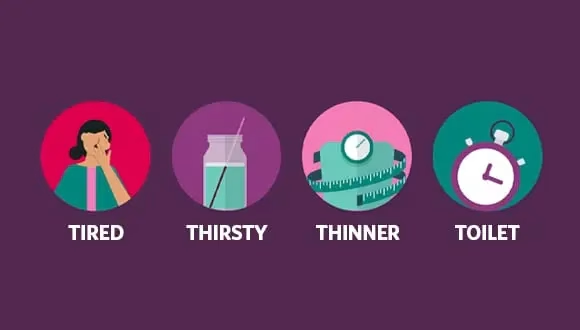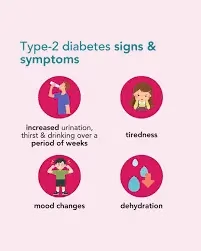
Every parent wants to see their child’s growth, but it’s challenging enough if they are diagnosed with a disease like Type 2 diabetes. It can be terrifying, perplexing, and overpowering. Understanding this disease can help you support your child’s health and happiness.
What is childhood type 2 diabetes?
In children with type 2 diabetes, the body either stops producing enough insulin to control blood sugar levels or develops resistance to it. A hormone called insulin aids in the body’s usage of meal sugar as fuel. High blood sugar levels result from sugar accumulation in the blood when insulin isn’t functioning correctly. Previously uncommon in youngsters, this disorder is becoming more prevalent, primarily due to changes in lifestyle and rising obesity rates. Type 2 diabetes in children is a long-term health condition that affects how their body processes blood sugar, or glucose. Normally, after eating, the body releases a hormone called insulin, which helps move sugar from the blood into the cells to be used for energy. Their bodies either do not produce enough insulin or become resistant to insulin’s effects, meaning the sugar stays in the blood instead of being used properly. This leads to elevated blood sugar levels, which can cause various health issues if not managed.
Why Is It Difficult to Manage Type 2 Diabetes in Children?
There are particular difficulties in managing diabetes in youngsters. Children are still growing physically, psychologically, and emotionally, unlike adults. For them, accepting a diagnosis might be distressing or puzzling. They may feel different from their pals, particularly if they have to take medicine, watch their blood sugar, or alter their food and exercise routines. Furthermore, parents frequently worry about how to support their kids in leading happy, regular lives while taking care of their health. Developing and keeping up good habits is one of the most difficult tasks. Although children are usually naturally active, many of them spend less time playing outside or exercising and more time in front of computers these days. The risk and treatment of diabetes are also influenced by unhealthy eating practices, such as consuming processed snacks, fast food, and sugary drinks. Supporting their children through these changes can be emotionally draining for parents, particularly when it seems like an uphill battle.
Identifying the Symptoms
Diagnosis may be delayed in children with Type 2 diabetes because they may not exhibit clear symptoms at first. Increased thirst, frequent urination, inexplicable exhaustion, hazy eyesight, and dark patches of skin around the neck or armpits are typical symptoms. Some kids might gain or lose weight suddenly, or they might feel hungry all the time. It’s critical to speak with your healthcare physician right away if you observe these symptoms.

In what ways may parents help their kids?
The good news is that lifestyle modifications and, occasionally, medicines can effectively manage type 2 diabetes in children. You play a critical part in fostering a supportive environment as a parent. Make healthy eating a family priority by encouraging your kids to consume a diet rich in fruits, vegetables, whole grains, lean meats, and healthy fats. Limit processed snacks, quick meals, and sugary drinks. Better choices can be promoted by involving children in meal planning and making mealtime fun.
Exercise is equally vital. Encourage your child to engage in active play for at least an hour each day; this might include playing sports, riding bikes, dancing, or just playing outside. Promoting active hobbies and cutting back on screen time can have a significant impact. Keep in mind that one of the best ways to affect your child’s behavior is to set an example of healthy practices yourself.
Frequent health examinations are crucial. Your doctor will keep an eye on your blood sugar levels, assist in creating a personalized treatment plan, and, if necessary, offer advice on prescription drugs. Additionally, you should assist your child in realizing that maintaining their health is about feeling well and remaining strong by educating them about their illness in an age-appropriate manner.
Managing a diabetes diagnosis might also provide emotional difficulties. Children may experience frustration, anxiety, or embarrassment. Your encouragement and comfort are essential as a parent. Encourage candid discussions, pay attention to their worries, and acknowledge minor accomplishments, like attempting a new, healthful cuisine or maintaining an active lifestyle for a week. Children can also benefit from counseling or support groups to help them manage their emotions.
Long-term care and prevention:
A healthy lifestyle can help prevent or postpone the onset of Type 2 diabetes in children, even while some risk factors, such as genetics, are beyond your control. The most important things are to maintain a healthy weight, promote wholesome eating habits, and encourage regular physical activity. Your child can live a full, active life and avoid difficulties with early intervention and regular management.
Conclusion:
At first, managing Type 2 diabetes in children may seem overwhelming, but it is completely manageable with knowledge, tolerance, and support. Your participation matters; you can help your child flourish in spite of the diagnosis by encouraging good behaviors, offering emotional support, and collaborating closely with medical specialists. Keep in mind that when Type 2 diabetes is properly controlled, many kids with the disease grow up to be robust and healthy.
Do not hesitate to consult a doctor if you are worried about your child’s health or think they may have diabetes. The best methods to guarantee your child’s well-being both now and in the future are early diagnosis and proactive management. We can keep our kids happy and healthy if we love and support them.



